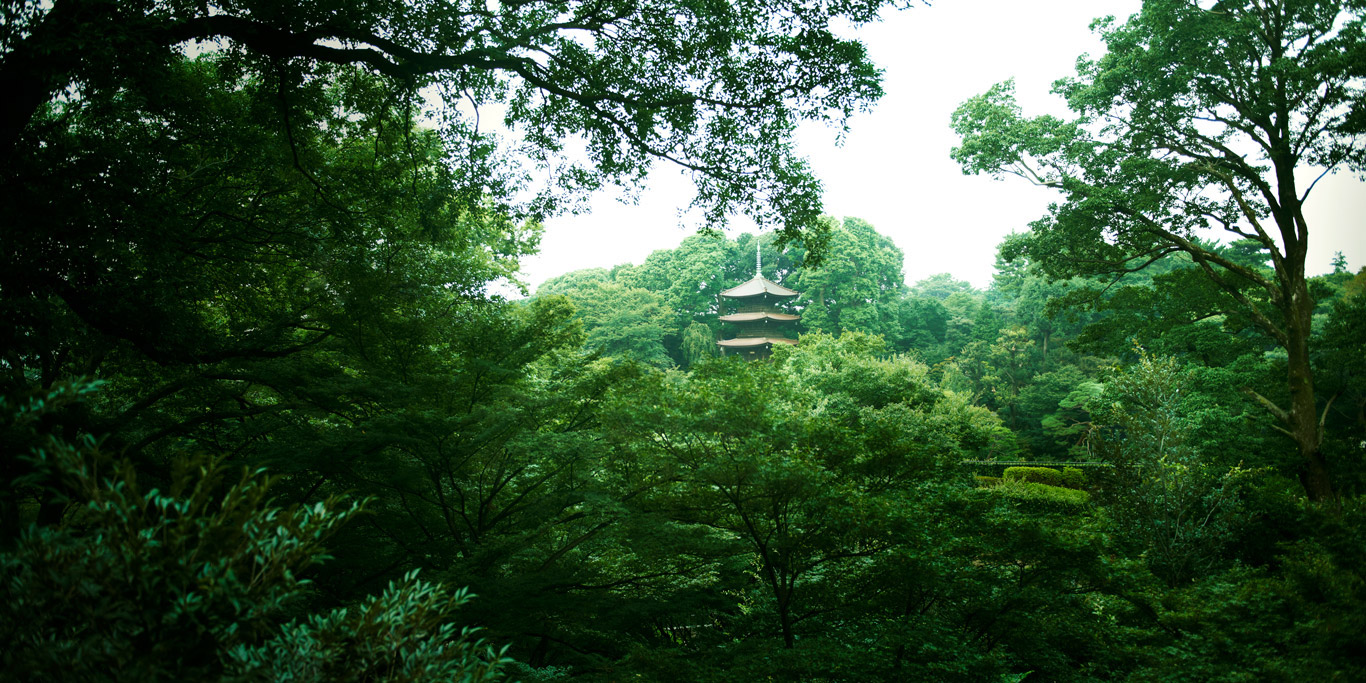
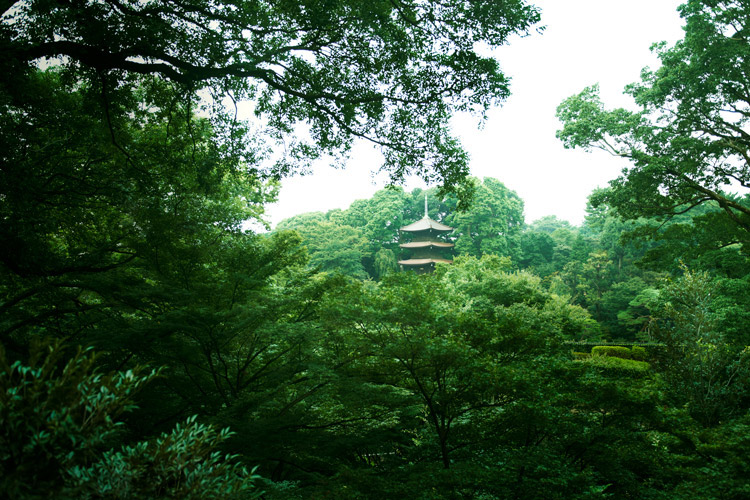
庭園&活動
東京樁山莊大飯店的「現在」、看點
Dining Etiquette: How to Enjoy High-End Japanese Cuisine
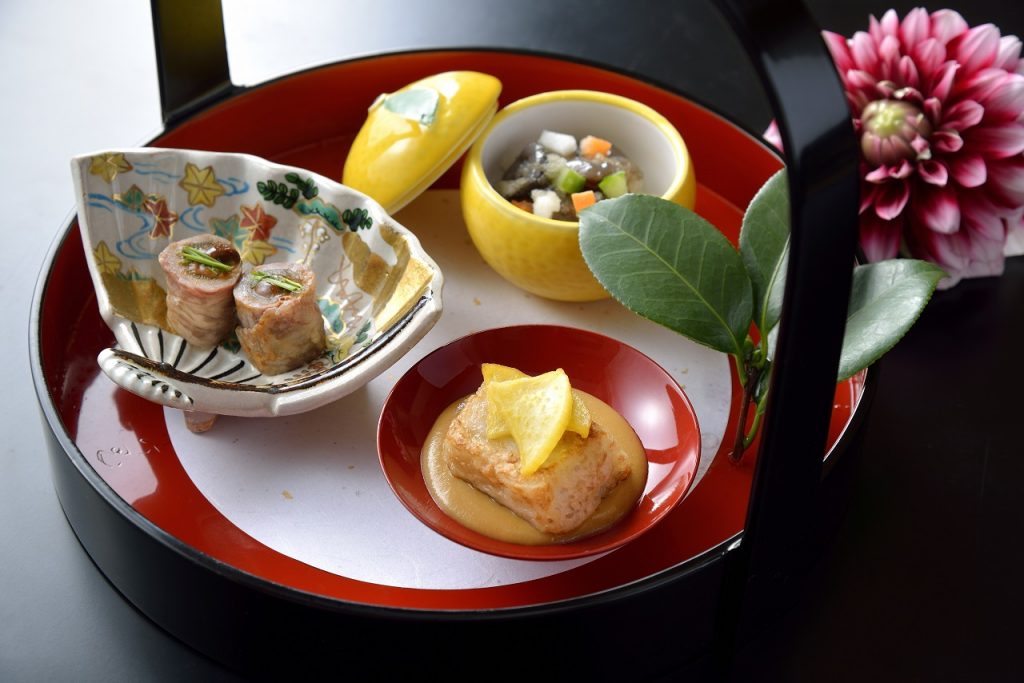
One of the joys of any trip is tasting the local cuisine and encountering new, surprising flavors. Although the food is likely one of the things you most look forward to when visiting Japan, you may be worried about table manners. Since Japan is known as a country with particular rules of etiquette, it’s easy to think that you may unknowingly commit a faux pas.

First of all, let us reassure you that the staff at any dining facility in Japan wishes that their guests relax and enjoy the cuisine without worries. Making sure that guests have a pleasant experience is the first priority in Japan’s service culture.
On the other hand, visitors may wish to know some of the rules regarding dining etiquette in order to better understand Japanese culture and its values. In this article, we introduce basic Japanese dining etiquette, along with a few specific manners that apply to dining at more formal Japanese restaurants called ryotei.
Dining Facilities at Hotel Chinzanso Tokyo and Basic Table Manners at Japanese Restaurants
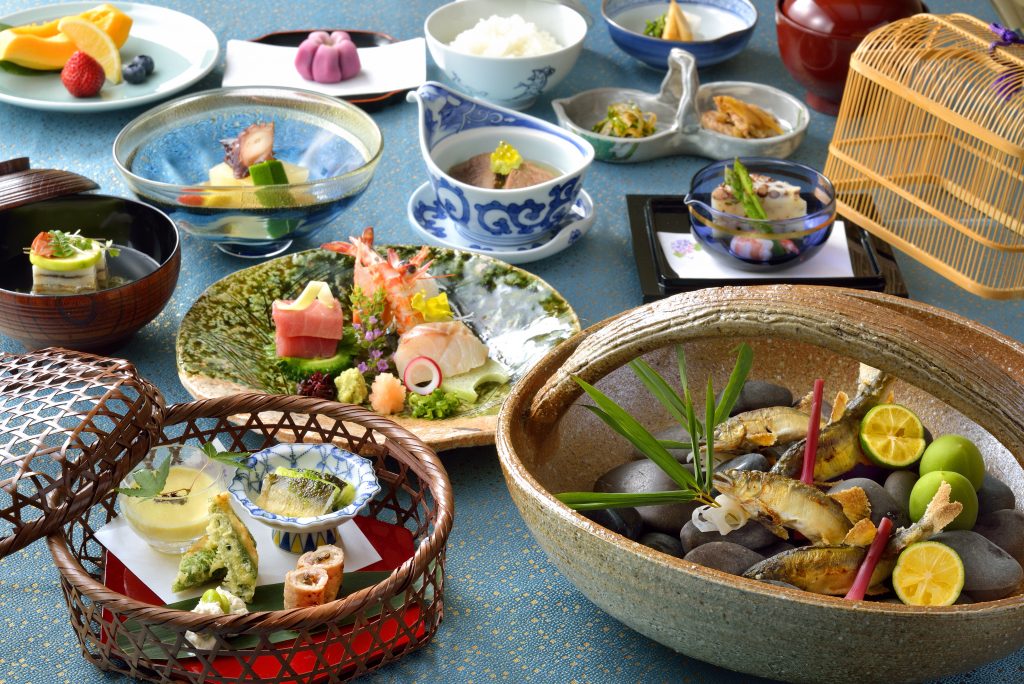
Hotel Chinzanso Tokyo has eight dining facilities: Il Teatro (Italian cuisine), The Bistro (casual dining), Ryotei Kinsui (Japanese kaiseki cuisine), Miyuki (Japanese cuisine), Mokushundo (stone-grilled cuisine), Unakiku (eel restaurant), the lobby lounge Le Jardin, and the main bar Le Marquis.
Since there are four Japanese restaurants, hotel guests and visitors can sample various types of Japanese cuisine on the precincts, from simple dishes to elaborate course menus.
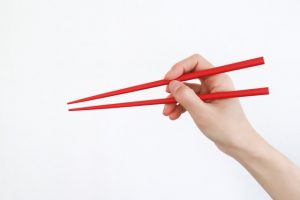
When dining at a Japanese restaurant, you’ll be given chopsticks. If you’ve never used chopsticks before, you might want to practice a little before arriving in Japan. You can also simply ask the restaurant staff to show you how to hold them. One of the chopsticks should be held between the thumb and index finger, stabilized with the ring finger. The other one should be held with the thumb, index, and middle finger; this allows you to move the chopstick in order to pick up food.
You’ll notice that Japanese dishes are made in such a way that they’re easy to split into portions and pick up using chopsticks. When eating soup, pick up the solid pieces and eat them with your chopsticks, then drink the liquid directly from the bowl. The trick is to pick up only a small amount of food at one time and carry it to your mouth. Unlike spoons and forks, the chopsticks should not be inserted in one’s mouth.
The only strict rule of behavior regarding chopsticks is that one shouldn’t use them as spears and stick them into the food. Also, in order to pick up a portion of food from a dish shared between several people dining at the same table, please use the special pair of chopsticks or tools available specifically for that dish. Once you’ve eaten using your own chopsticks, they shouldn’t be used for a shared dish.
Dining at Ryotei, High-End Japanese Restaurants
 Ryotei are Japanese restaurants of the highest level, offering guests the finest experience of Japanese cuisine and culture. Ryotei have existed since the Edo period (1603 – 1868) and their purpose is to treat guests with excellent kaiseki courses on celebratory occasions. In traditional entertainment districts such as Gion in Kyoto or Akasaka in Tokyo, there are still ryotei where guests are entertained with traditional dances performed by geisha.
Ryotei are Japanese restaurants of the highest level, offering guests the finest experience of Japanese cuisine and culture. Ryotei have existed since the Edo period (1603 – 1868) and their purpose is to treat guests with excellent kaiseki courses on celebratory occasions. In traditional entertainment districts such as Gion in Kyoto or Akasaka in Tokyo, there are still ryotei where guests are entertained with traditional dances performed by geisha.
Formal business dinners and official meetings of two families whose children plan to marry are usually held at ryotei. These restaurants are considered formal, thus the staff is usually clad in kimonos or suits.
Ryotei restaurants feature a Japanese interior with tatami flooring, alcoves called tokonoma with seasonal flower arrangements, and displays of Japanese art. They are often surrounded by nature, offering views of a Japanese garden with a pond or of a forest. Appreciating the features of the interior and the natural surroundings is an integral part of the dining experience at a ryotei.
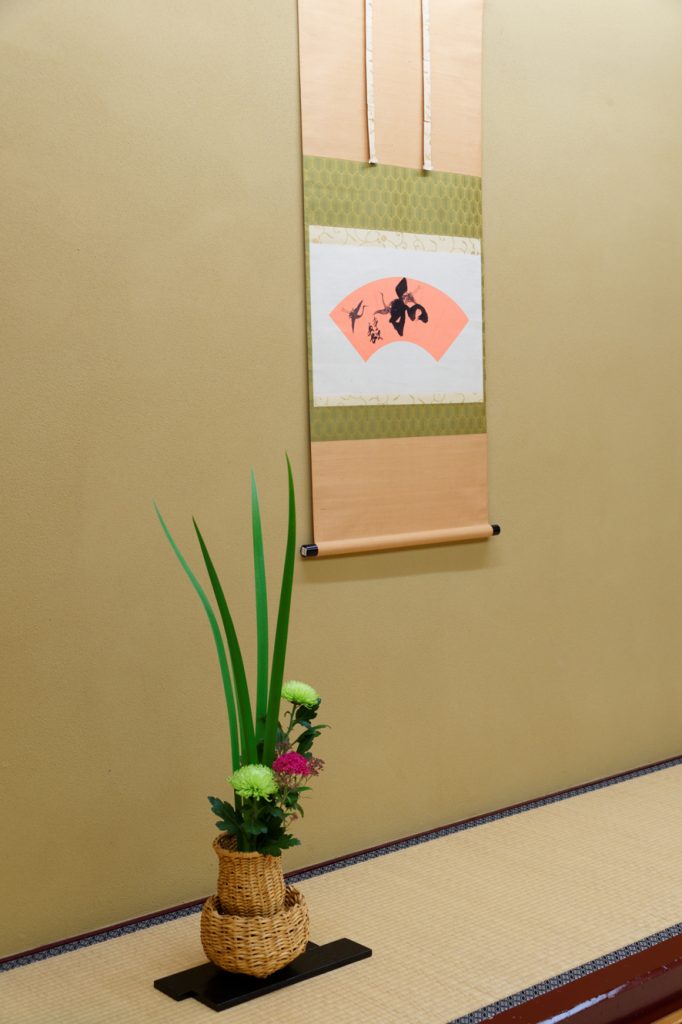
Kinsui, the ryotei within Hotel Chinzanso Tokyo, is one of the finest ryotei restaurants in Tokyo, often booked by customers for official dinners and celebrations. Surrounded by the lush greenery of Chinzanso Garden, Kinsui offers guests the ultimate experience of Japanese cuisine and culture.
When visiting Kinsui, please refrain from wearing casual clothes such as short pants, revealing T-shirts and dresses, or sandals. The recommended dress code is business or semi-formal, one that you would feel comfortable wearing on a special occasion. Since the restaurant has a Japanese interior, you’ll be leaving your shoes at the entrance; please make sure you’re wearing socks or carry a pair of socks that you can quickly slip on. Ladies wearing stockings should also have a pair of socks at hand; although covered in tatami mats, the floor can become cold in autumn and winter. It might be useful to know that, while there are indeed many ryotei where guests sit directly on the tatami in a kneeling position, at Kinsui, there is a space in the floor under the tables so that guests can stretch their legs.
Once you are guided to your private dining room, take the time to appreciate the interior and the garden view as you wait for your food. Every detail is carefully chosen for the guests to get a feel of the seasons, which play a central role in almost every aspect of Japanese culture. You might even smell a subtle fragrance in the air; burning Japanese incense that welcomes guests with a pleasant aroma is also an element of Japanese hospitality.

In every compartment there is a slightly elevated alcove. A hanging scroll with a painting or calligraphy work might be on display there, along with flowers.
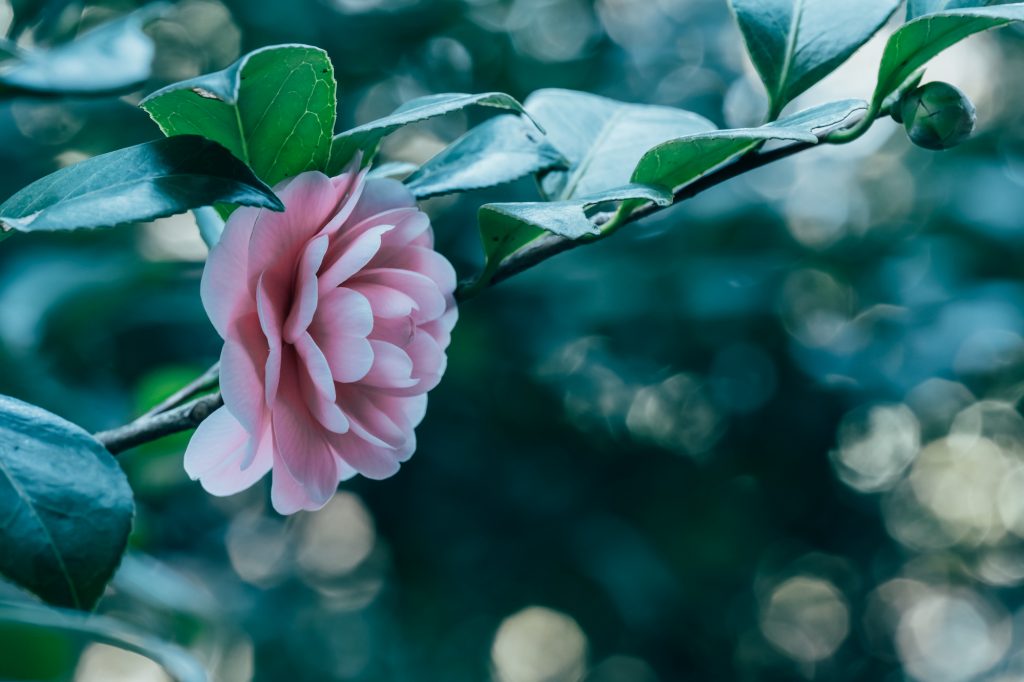
Flower arrangements usually contain a combination of plants that are in season and branches or blooms for the following season; this is a way to have the guests look forward to what’s to come. As we mentioned in a previous article, there are 24 seasons in Japanese tradition, seven of which you can experience at Hotel Chinzanso Tokyo.
When appreciating the art displayed in the tokonoma, please be careful not to step on the alcove as it is the most precious corner in the entire room.
The first items brought to the table are wet hand towels and some tea. Use the towel to wipe your hands before proceeding with the meal.
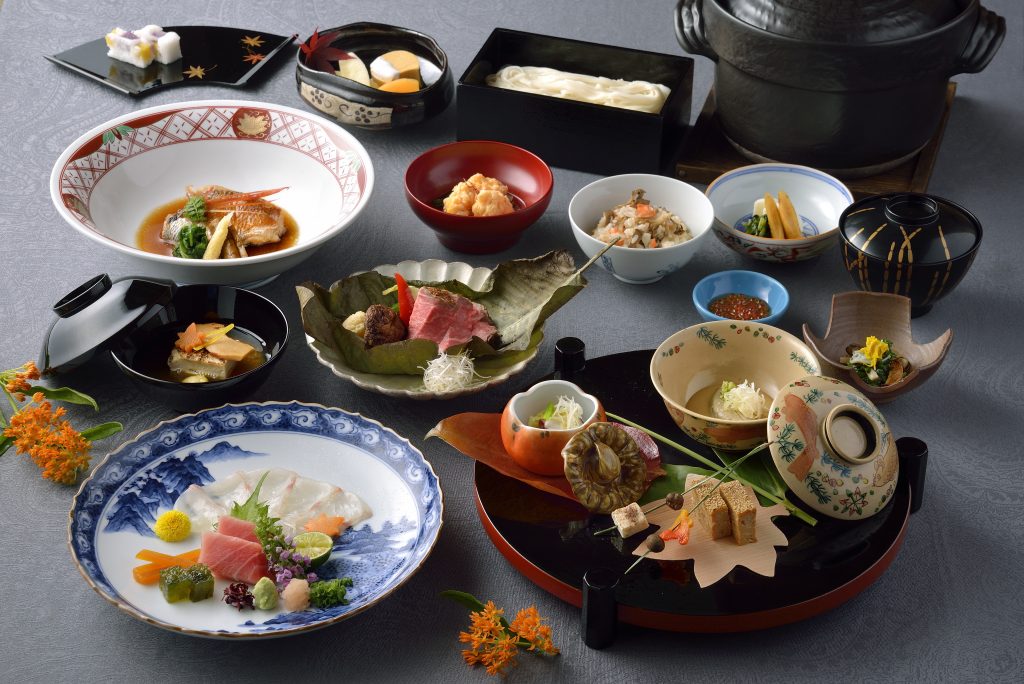
The dishes served at Kinsui, and at any ryotei, is kaiseki cuisine (Japanese course menu). The course consists of several dishes that are served one by one.
A glass of fruit liqueur is usually served as an aperitif, followed by appetizers. The second dish, called hassun, contains two types of food, one made with ingredients grown on land, and one from the sea. Sashimi (fresh fish slices served with soy sauce and wasabi) is next, followed by a boiled dish made with vegetables, tofu, and other ingredients. After a soup served in a lidded bowl, there is usually grilled fish, then a more substantial dish made with meat. Steamed rice and miso soup are served toward the end of the course, right before dessert.
Kaiseki cuisine evolved from the sequence of dishes served at tea ceremony events. The distinctive feature of this type of cuisine is that it reflects the current season through flavors and colors; looking at your plate, you might notice the same hues found in the garden outside: reds, yellows, and browns if it’s autumn, pink and light green if it’s spring, cool colors such as blue, green, and white if it’s summer. Another important feature is that the flavors of the ingredients are kept as close as possible to their original, natural state, without overcooking. The purpose of any kaiseki meal is that the guests experience the season through flavors. For details on the features of kaiseki cuisine, please refer to this article.
All of the dishes served before the steamed rice at the end of the meal go well with Japanese sake and other alcoholic drinks. The wish of any Japanese host is that the guests are in a good mood, enjoying the flavors and the conversation along with high-quality beverages that lift one’s spirit. In order to encourage a cheerful atmosphere, rice, which inhibits the consumption of alcohol, is kept for last.
Presented with lavish arrangements of colorful dishes, guests might hesitate on where to begin. As a rule, start with the dish that is nearest to you and proceed farther up your plate. The flavors are usually gentle and mild so that anyone can enjoy them. Nevertheless, it might be a good idea to try a very small quantity of the dish first to see whether you like it. Please feel free to leave those that you are not fond of.
In order to appreciate the original taste of the ingredients, try a bit of the dish as it is first, without dipping it in soy sauce or adding spices. When eating sashimi, it might be tempting to dissolve the wasabi paste into the soy sauce. However, the wasabi should not be dissolved. Try to place a very small quantity of wasabi on the piece of fish, and then dip it into the soy sauce.
A member of the staff usually offers a short explanation about each dish in the course. They mention the reason why that particular dish was offered to the guests on that day, as well as the origin of the ingredients; there might be ingredients grown locally, which the community is very proud of, or products brought from far away, which makes them very precious.
Lastly, one aspect that you should be aware of when dining at a ryotei is that the bill includes a separate fee for using a private dining room.
Enjoy Traditional Japanese Cuisine at Hotel Chinzanso Tokyo
We hope that our brief guide to Japanese cuisine and kaiseki course meals helps you feel more confident when dining in Japan. Remember that your host ultimately wishes for you to enjoy the flavors at leisure without worrying about etiquette.
Nevertheless, knowing these rules will help you appreciate the cultural experience of dining at a high-end Japanese restaurant and revel in the joy of being treated with the utmost hospitality. The host’s consideration is expressed in the quality of the dishes and their presentation, as well as in the interior design and the way that it blends in with the natural environment.
We look forward to welcoming you at Ryotei Kinsui, where you can enjoy kaiseki cuisine prepared from the heart by our talented and skillful chefs.
Updated on April 13,2023
